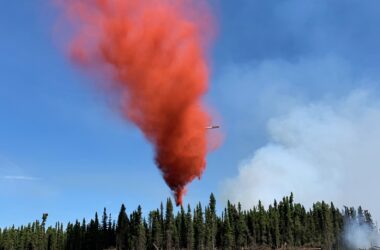Homer Electric Association has requested a rate increase from the Regulatory Commission of Alaska while a case against other utility companies that use the Bradley Lake hydroelectric plant is ongoing.
Joe Gallagher with HEA explains the dispute with other Railbelt electric utilities from Seward to Fairbanks.
Gallagher: “The power for other utilities is moved across HEA’s transmission systems to Anchorage and the Mat-Su and Fairbanks areas. Currently there are no charges, no costs being covered by other utilities for using HEA’s transmission system. HEA believes there should be.”
The proposed interim rate increase of 3.25 percent would result in approximately a $3.15 increase for the average residential customer using 550 kilowatt hours a month beginning in January.
The Alaska Energy Wiki defines the Railbelt utilities as “six regulated public utilities that extend from Fairbanks to Anchorage and the Kenai Peninsula. These utilities are Golden Valley Electric Association (GVEA); Chugach Electric Association (CEA); Matanuska Electric Association (MEA); Homer Electric Association (HEA); Anchorage Municipal Light & Power (ML&P); the City of Seward Electric System (SES); and Aurora Energy, LLC as an independent power producing utility.”
Gallagher weighed the possibilities in the case.
Gallagher: “If we did recoup those costs under the case submitted, we would see a very slight increase of about, I believe, 1.6 percent. If we were to lose that case or not recoup any of those costs, the rate case submitted actually has an increase over today’s rates of about 5.2 percent that would take place in January 2017.”
A decision on the interim rate increase is expected by mid-December.
HEA members have questioned why the cost for electricity has not decreased in accordance with the price of fuels, such as gasoline. Gallagher says only the cost of natural gas is included in HEA’s rates, that is the fuel they refer to, not gasoline or diesel.






